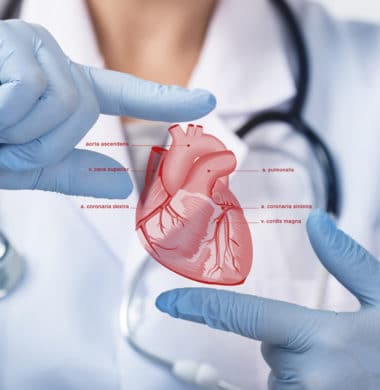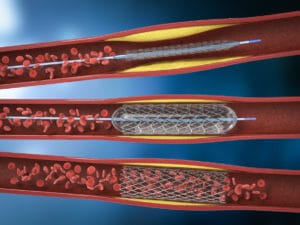What Are the Differences Between Invasive and Noninvasive Cardiology?

Cardiology is a huge field. Focused on understanding and treating the cardiovascular system – sometimes casually called your circulatory system – cardiology encompasses much of your anatomy, including your blood vessels and, most importantly, your heart.
With the complexity of the heart and the cardiovascular system, it shouldn’t come as a surprise that cardiology isn’t just one discipline but several different approaches to understanding the heart and the rest of the cardiovascular system. Two important approaches are invasive and noninvasive cardiology. Understanding them can help you know which one is more likely to help you get the results you want from the diagnosis and treatment of your cardiovascular conditions.
Invasive Cardiology
Invasive cardiology gets its name from the fact that the procedures it uses require breaking the skin. However, this represents a wide range of procedures, most of which we would describe as minimally invasive.
Some of the common procedures performed in invasive cardiology are:
- Angioplasty
- Stenting
- Atherectomy
- Electrophysiology studies
- Implantable cardioverter-defibrillator (ICD) placement
- Pacemaker placement
- Transcatheter Aortic Valve Replacement (TAVR)
- MitraClip

Often an invasive cardiologist will follow up by placing stents – tubes for bracing your blood vessels – in the opened blood vessels. This helps the blood vessels stay open for long-term healthy blood flow.
Atherectomy is when a cardiologist uses a special catheter designed to remove plaque from the arteries. This is either caught in the catheter or ground up small enough to wash away in the bloodstream safely.
In an electrophysiology study, an invasive cardiologist will use a different type of catheter with electrodes that can measure the heart’s electrical currents. This helps the cardiologist figure out where the heart might be damaged and what is causing heart arrhythmias.
Invasive cardiology also includes the placement of devices to improve the function of the heart. An implantable cardioverter-defibrillator (ICD) monitors the heart’s rhythm and delivers an electric current to restore a regular heartbeat. A pacemaker, on the other hand, is designed to keep the heart from slowing too much. It can also sense the heart’s rhythm and intervenes when necessary.
Transcatheter Aortic Valve Replacement (TAVR) uses a device like a stent to create a wider opening in the aortic valve.
MitraClip is a new device used to correct the most common heart valve disorder, mitral regurgitation, in which the mitral valve doesn’t fully close. Instead of open-heart surgery, a catheter is used to place this clip on the mitral valve, helping it close better.
Sometimes people, including us, describe this as interventional cardiology or describe interventional cardiology as a third category which includes some but not all invasive cardiology procedures.
Non-Invasive Cardiology
Noninvasive cardiology is cardiology that doesn’t require the cutting or piercing of your skin. Usually, this focuses on the use of procedures to diagnose heart problems, such as:
- Chest x-rays
- Electrocardiogram (EKG / ECG)
- Echocardiography
- Heart score test
- Exercise and stress tests
Chest x-rays let cardiologists evaluate the health of the cardiovascular system by letting a doctor look at the heart and lungs more directly. An electrocardiogram measures the heart’s electrical activity to help doctors diagnose past heart attacks and check for arrhythmias.
Echocardiography uses ultrasound to visualize the heart, including the blood it is pumping. With echocardiography, a cardiologist can look at the heart’s structures and analyze their function.
A heart score test measures the amount of calcium in arterial plaque around the heart. It can help assess someone’s risk for future heart attacks and strokes.
Exercise and cardiac stress tests are used to watch how the heart functions under exertion to see whether this hints at any potential problems.
Noninvasive cardiology can also include things like wellness coaching, lifestyle modification, and similar preventive cardiology techniques.
Invasive and Noninvasive Cardiology
At South Denver Cardiology, we perform a wide range of cardiology techniques, including both invasive and noninvasive approaches. We can help you understand your heart health and what it will take to get healthy and stay healthy.
If you have concerns about your cardiovascular health, please use our online system to make an appointment today at our main office in Littleton or our satellite offices in Englewood, Denver, Castle Rock, and Parker.
- 6 Tips for Exercising Outdoors with a Heart Condition - May 19, 2025
- Lifestyle Changes That Can Help Manage Arrhythmia - April 30, 2025
- Common Treatments for Peripheral Vascular Disease - April 23, 2025
Sign Up
As with any health concerns, your specific treatment program should be discussed thoroughly with your primary care physician as well as any specialists who may need to be consulted – like a cardiologist.
Sign Up
